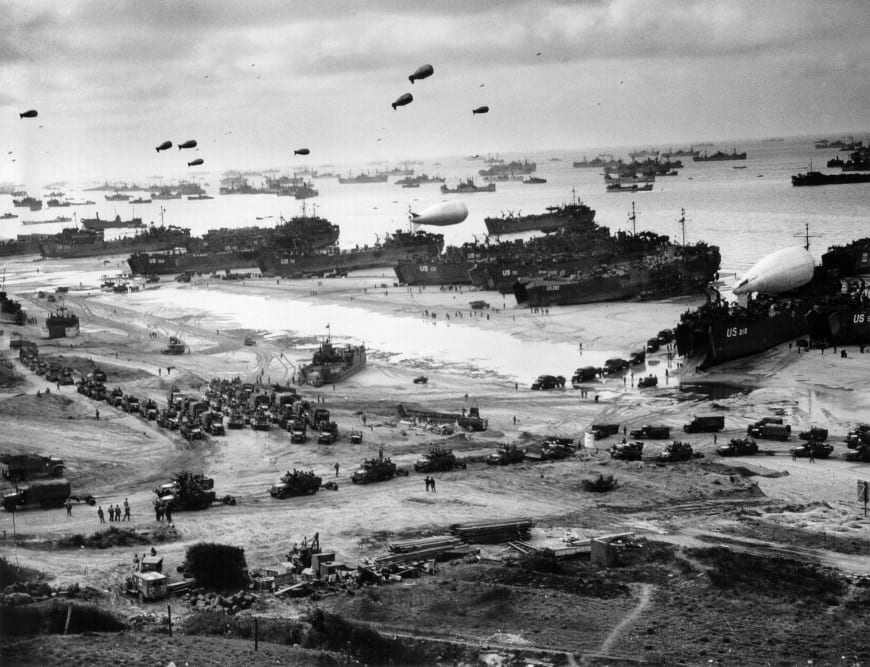Operation Overlord, best know as D-Day, occurred on 6th June 1944. On that day, Allied forces landed on the beaches of Normandy in Nazi-occupied France, and Allies managed to foothold the French coastline.
Operation Overlord In Numbers
132,000 Allied forces had landed in France, and more than 2 million were shipped there, including a total of 39 divisions. 139 major warships, 221 smaller combat vessels, more than 1000 minesweepers and auxiliary vessels, 4,000 landing craft, 805 merchant ships, 59 blockships and 300 miscellaneous small cratf, took part in this important operation. The operation also included 350,000 members of the French Resistance, and Eleven thousand aircraft, such as fighters, bombers, transports and gliders.

How The D-Day Unwinded
As it is known, the operation began somewhere around midnight. The US 82nd and 101st of the American forces, and Britain’s 6th Airbone, attacked enemies. Also, five of Normandy beaches with their codenames Sword, Juno, Gold, Omaha and Utah, were overflowed by seaborne forces. Sword was landed by British 3rd Infantry Division, while the British 50th Infantry Division took Gold beach. Juno was landed by the Canadian 3rd Infantry Division, and Utah and Omaha by American forces, including the US 4th and 1st Infantry Divisions.

How Successful The Operation Overlord Was
The operation had mixed results. Utah was taken by US troops, but Ohama was where they failed. British and Canadian troops managed to play a successful operation, and then they moved toward Bayeun and Caen. Similar was on Sword.
Operation Overlord was the beginning of the liberation of western Europe from Nazi control, but the price for it was big. Around 10.500 Allied troops died, were wounded or reported missing in the operation. Yet, D-day is considered to be ultimately successful.




